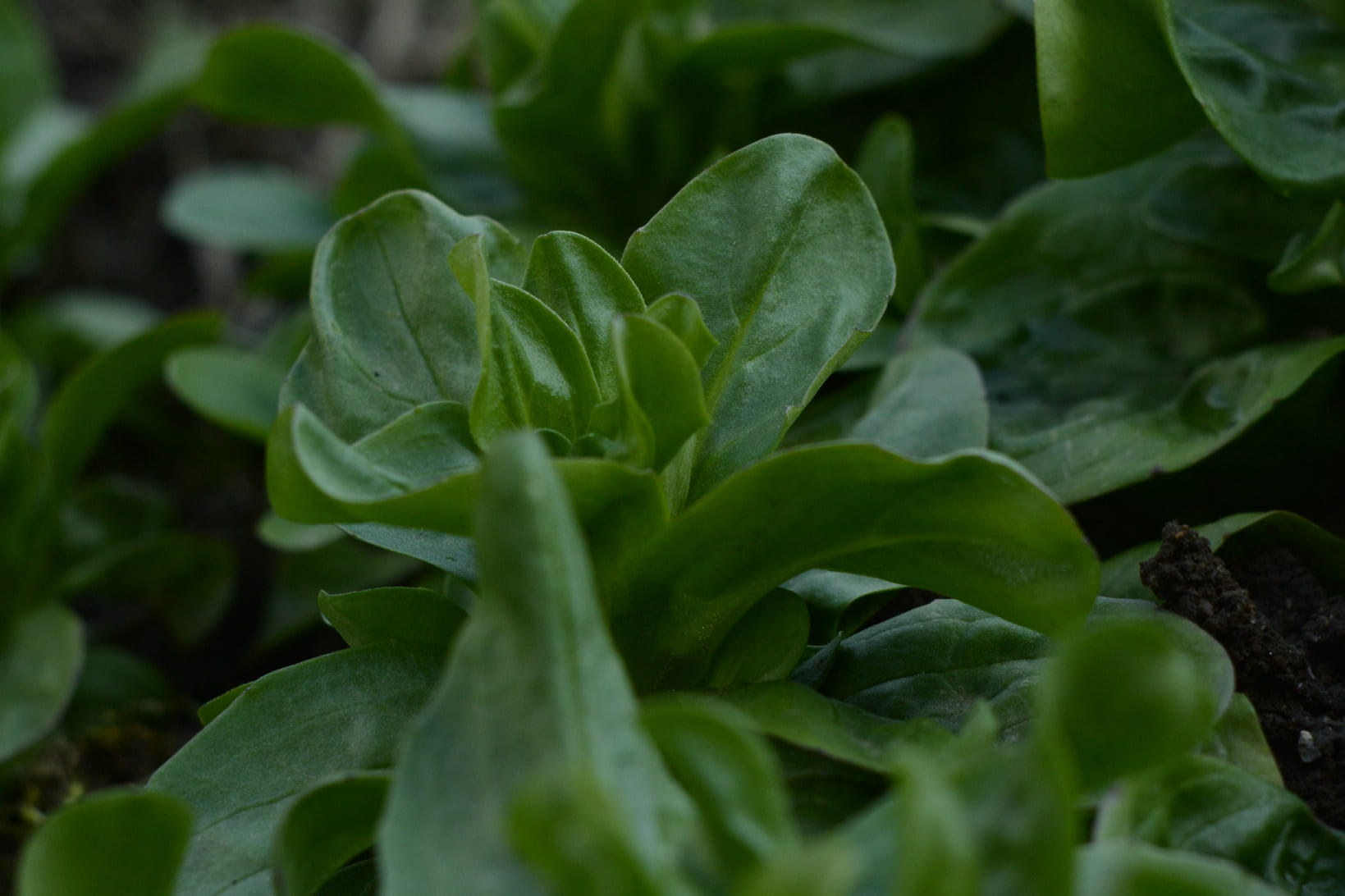
Lamb's lettuce: sowing, cultivation and harvest
Contents
Corn salad in a nutshell
- Corn salad (Valerianella locusta) is a small vegetable plant grown for its sweet-flavoured leaves
- It is sown in late summer for a harvest that spreads until March, depending on the varieties
- This salad belongs to the family of Caprifoliaceae and grows wild throughout Europe
- Its dark green leaves, enjoyed raw or sometimes cooked, offer numerous nutritional benefits
- Hardy and low-maintenance, corn salad prefers firm soils and can be tucked between the ranks of other vegetables
A word from our expert
If there are salads that deserve a place in the vegetable garden, it is certainly lamb’s lettuce. Firstly, because it is sown at the end of summer, a time when plots begin to empty. However, as lamb’s lettuce enjoys a bit of shade, it can also be sown between the ranks of cabbages, onions, leeks… Otherwise, it can easily follow other summer vegetables.
We also appreciate lamb’s lettuce because it is not demanding in terms of soil. Indeed, lamb’s lettuce prefers rather firm soils. Therefore, it is unnecessary to work and loosen the soil before sowing lamb’s lettuce. Even less so to enrich it! However, it does require a bit of moisture and not too high temperatures to germinate. Thus, a light mulch or a jute cloth is recommended to assist seed germination.
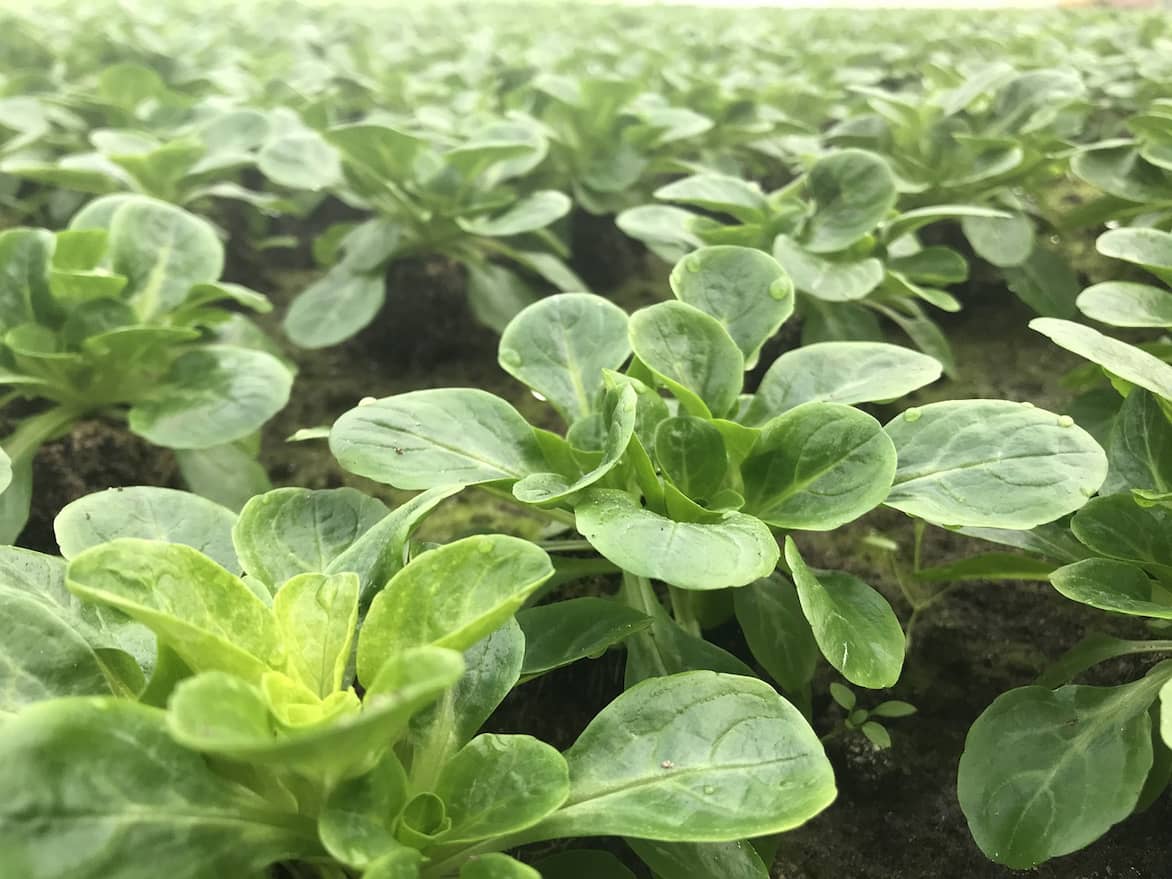
Depending on the varieties, lamb’s lettuce is sown from August to October
There are different varieties of lamb’s lettuce, some more hardy than others. Less resistant to cold and quicker to mature, the large-seeded varieties of lamb’s lettuce are sown from August until October-November. As for the small-seeded lamb’s lettuce, it is much hardier and can be harvested throughout the winter, provided it is covered with a protective veil if temperatures drop too low.
Rich in undeniable nutritional qualities and with a refined flavour, what is commonly known as corn salad, or also as monk’s herb, auricle, white lettuce, raiponce… is mainly enjoyed in salads but can also be eaten cooked.
Description and botany
Botanical data
- Latin name Valerianella locusta
- Family Caprifoliaceae
- Common name lamb's lettuce, corn salad, earleaf, hare's ear, rapunzel, herb of the canons...
- Flowering Spring flowering
- Height 15 cm
- Exposure partial shade, sun
- Soil type Ordinary, firm and cool soil
- Hardiness Hardiness down to -20 °C
The lamb’s lettuce cultivated in the garden is a vegetable plant derived from a native plant Valerianella olitoria, considered a weed. It primarily grew along paths and in cereal fields, bare meadows, and vineyards. Likely originating from southern Europe, North Africa, and western Asia, it was appreciated in antiquity. However, it was long regarded as a common herb, eaten only by peasants.
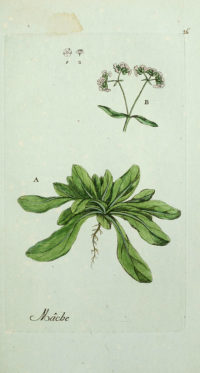
Botanical illustration
It wasn’t until the Renaissance that Valerianella olitaria became a cultivated plant in French gardens, particularly along the Loire. This small plant, now a vegetable and called lamb’s lettuce since the 17th century, enjoys the mildness of the oceanic climate. Yet, it is still not appreciated as it should be! With the Second Empire and the influence of a few great chefs, restaurateurs, and discerning gastronomes, lamb’s lettuce gained its nobility. Through selection, it became a salad with a sweeter and more refined flavour than wild lamb’s lettuce.
Today, there is an AOP (Controlled Designation of Origin) for Mâche Pays de Loire, and Nantes lamb’s lettuce benefits from an IGP (Protected Geographical Indication). The market gardening production of lamb’s lettuce is concentrated in Loire-Atlantique.
Etymologically speaking, Valerianella olitaria means vegetable of good health, with valerianella coming from “valeo,” meaning “to be healthy,” and olitaria from “olus,” meaning “vegetable.” This etymology highlights the nutritional properties of lamb’s lettuce.
Cultivated lamb’s lettuce (Valerianella locusta) is a perennial or biennial vegetable plant from the Caprifoliaceae family (formerly Valerianaceae), characterised by a spreading and channelled habit. The foliage is a rich green, fleshy, and somewhat veined. It consists of a rosette of small leaves measuring 5 to 8 cm that form tufts. The oblong leaves are spatulate and obtuse, growing on pubescent and channelled stems.
A discreet flowering appears in April or May. Lamb’s lettuce produces small, pale blue to white flowers with tubular corollas, featuring 5 lobes. If you allow these flowers to go to seed, lamb’s lettuce will produce achenes containing flat seeds in June, which will disperse near the parent plant. To collect these seeds, you must uproot the plants when they turn yellow and hang them on a cloth. The seeds will fall out on their own.
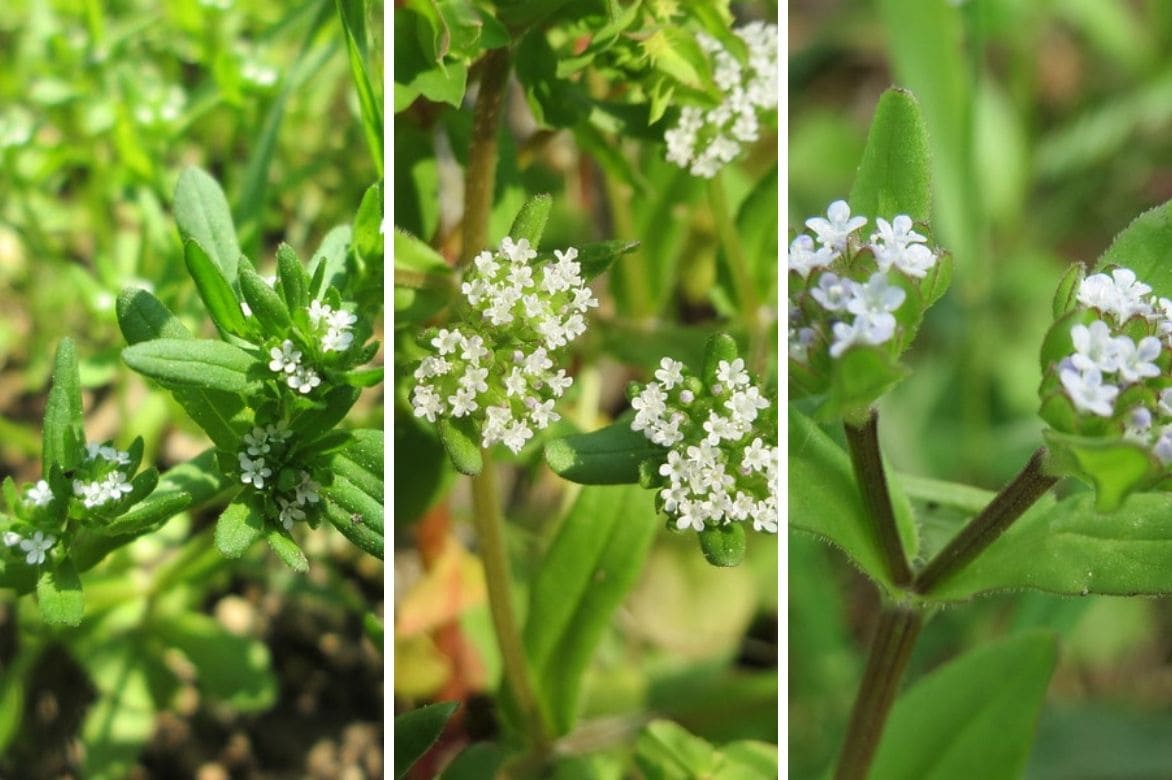
In spring, lamb’s lettuce offers a discreet flowering of silvery blue to almost white
Lamb’s lettuce has a rapid growth rate and rarely exceeds 15 cm in height. It is a salad harvested in autumn or winter, depending on the varieties. There are commonly two types of lamb’s lettuce: the large-seeded lamb’s lettuce, an early variety, less cold-resistant, which makes an excellent autumn salad, and the small-seeded lamb’s lettuce, the most common. This small-seeded variety is hardier and ideal for winter cultivation. The gardener starts sowing with the large-seeded lamb’s lettuce, which should be sown by mid-July and harvested until November. The small-seeded variety can be sown later. While it is less early, it can be harvested throughout the winter, until March.
Read also
Succeeding in growing lamb's lettuceThe different varieties of lamb's lettuce
Depending on the varieties, corn salad has a distinct foliage. The leaves of large-seeded corn salad are generally wider than those of small-seeded corn salad, a bit more rounded, thicker, and smaller. The colour also varies from light green to dark green. The leaves of large-seeded corn salad are light green with a yellowish tint.
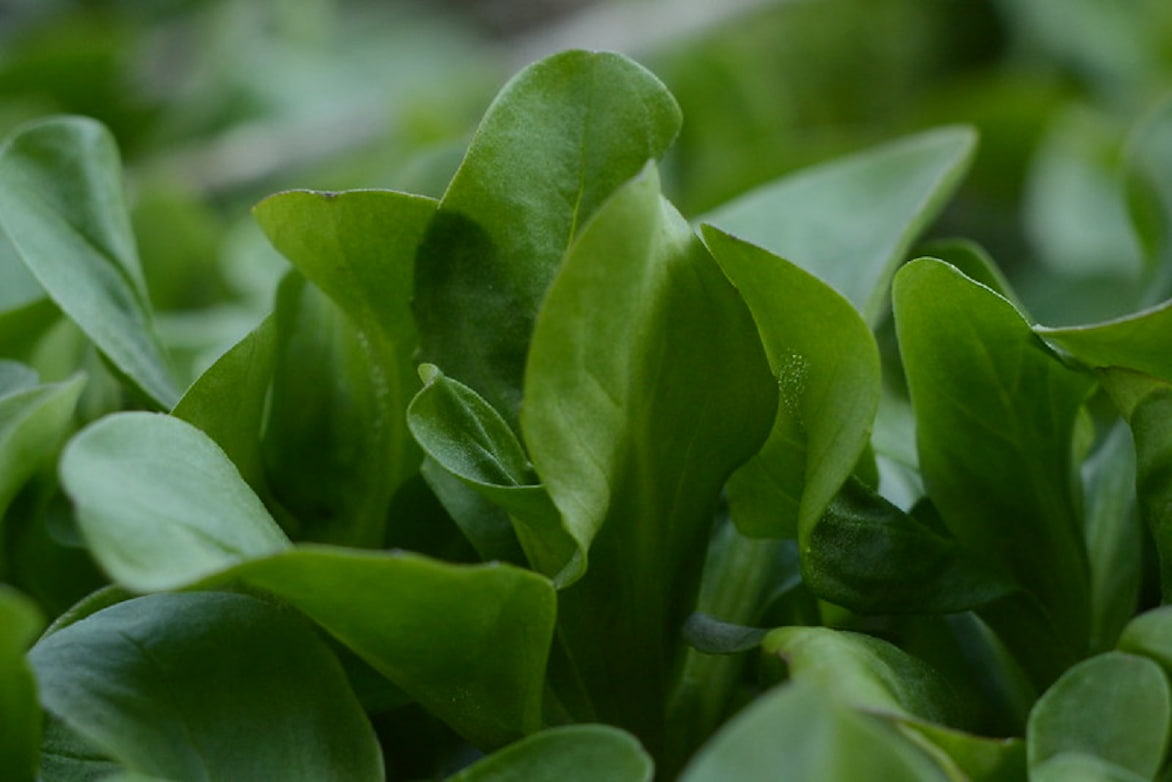 Depending on the varieties, the foliage of corn salad is more or less flattened, fleshy, and green.
Depending on the varieties, the foliage of corn salad is more or less flattened, fleshy, and green.
For autumn harvests, favour large-seeded corn salad with long, tasty leaves, or Dutch large-seeded corn salad with grey-green foliage. Among small-seeded corn salads, there are many traditional varieties, all more delicious than the others: Verte de Cambrai, Coquille de Louviers, Verte de Louviers, Verte d’Étampes, Ronde maraîchère… Numerous improvements have allowed professionals to obtain more resistant and productive varieties such as Agathe, Favor, Gala… Some of these corn salads can even be grown all year round.
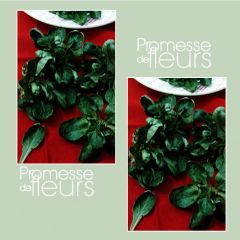
Corn salad Coquille de Louviers
- Height at maturity 15 cm
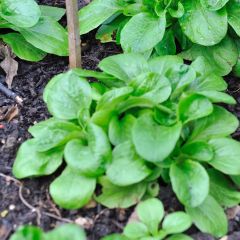
Lambs Lettuce Vit - Vilmorin Seeds
- Height at maturity 15 cm
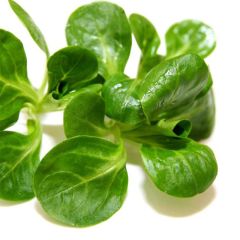
Lambs Lettuce Verte dEtampes - Ferme de Sainte Marthe Seeds
- Height at maturity 15 cm
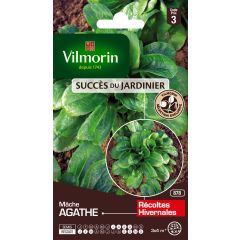
Lambs Lettuce Agathe - Vilmorin Seeds
- Height at maturity 15 cm
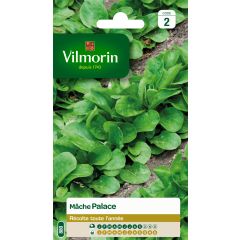
Lambs Lettuce Palace - Vilmorin Seeds
- Height at maturity 15 cm
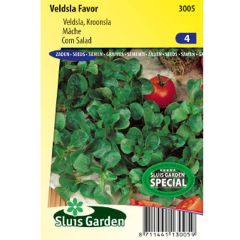
Lambs Lettuce Favor - Corn Salad
- Height at maturity 15 cm
Discover other Lamb's lettuce
View all →Available in 1 sizes
Available in 1 sizes
Available in 1 sizes
Available in 1 sizes
Available in 1 sizes
Available in 1 sizes
Available in 1 sizes
Available in 1 sizes
Available in 1 sizes
Available in 1 sizes
Sowing lamb's lettuce
What soil and exposure for lamb’s lettuce?
The location chosen for lamb’s lettuce is crucial for the success of the sowing. Lamb’s lettuce prefers cool soils that do not dry out, possibly slightly clayey, but well-drained. It can also grow in lighter soils as long as they remain cool and humus-bearing. However, lamb’s lettuce requires a firm, compacted soil. Therefore, it is not necessary to dig before sowing the seeds. A quick pass with a broadfork or rake is sufficient. Careful weeding is essential, as lamb’s lettuce seeds take time to germinate and may suffer from competition with adventive plants. Adding fertiliser is not obligatory.
Lamb’s lettuce will thrive when sown after beans, as it benefits from the nitrogen. However, avoid sowing it after potatoes, as the soil is too loose.
In terms of exposure, lamb’s lettuce prefers a semi-shaded position, as excessive heat does not suit it. If sown in full sun, shading will be necessary, for example, using overturned crates, light mulching, fresh fern leaves, or burlap. Since lamb’s lettuce is a good companion plant, it can also be sown in the shade of cabbages, leeks, or onions… However, a few rays of sunshine are essential.
When to sow lamb’s lettuce?
The ideal period for sowing lamb’s lettuce spans August, September, and October. The harvest period will depend on the sowing date. Large-seeded varieties, sown from mid-July to August, can be enjoyed two months later. In contrast, smaller-seeded varieties, which are slower to mature, are sown more in September and October and harvested three to five months later.
For a continuous harvest of lamb’s lettuce, stagger the sowings every three weeks, alternating between large-seeded and small-seeded varieties.
How to sow lamb’s lettuce?
Lamb’s lettuce can be sown either in rows or broadcast. Broadcasting makes maintenance more challenging, so sowing in furrows is preferable.
- Use a rake on the well-weeded plot
- Dig furrows 2 to 3 cm deep, spaced 20 cm apart.
- Sow the lamb’s lettuce seeds very sparsely
- Cover with a thin layer of compost
- Firm down well with the back of a rake
- Water gently.
You can also simplify sowing by opting for ready-to-sow lamb’s lettuce seed tapes.
Today, you can also find lamb’s lettuce as young plants to transplant into the ground or even in pots or containers.
Read also
How to make a seed tape?Caring for and harvesting lamb's lettuce
8 to 15 days after sowing (depending on the outdoor temperatures!), the seeds will germinate. It is very important to keep the soil nice and cool during this period. Therefore, watering should be regular, always using a watering can. If autumn is dry, watering will continue; otherwise, it is unnecessary.
If your sowings are really too thick and dense, thinning should be done when the seedlings have 3 to 4 leaves. Keep only one plant every 10 cm or so.
It is recommended to hoe and weed the lamb’s lettuce regularly. Similarly, if winter temperatures are low, a winter cover is advised at night. From February onwards, to hasten the harvest, a plastic tunnel can also be placed.
The harvest is done as needed, two to four months after sowing. To harvest, cut the rosettes just above the collar. After that, a second harvest of small rosettes is possible. Lamb’s lettuce leaves can be stored for 2 to 3 days in the vegetable drawer of the refrigerator.
The enemies that lamb's lettuce fears
The main enemies of lamb’s lettuce are fungal diseases, especially if the soil is heavy and poorly drained, and during an autumn that is both rainy and warm. To prevent the onset of these diseases, it is essential to aerate the plantings and to be gentle during sowing. Above all, strictly adhere to crop rotation.
The main diseases that lamb’s lettuce can suffer from include powdery mildew, downy mildew, rust, and bacteriosis. Horsetail manure is effective as a preventive measure against powdery mildew, while Bordeaux mixture is effective against downy mildew and bacteriosis.
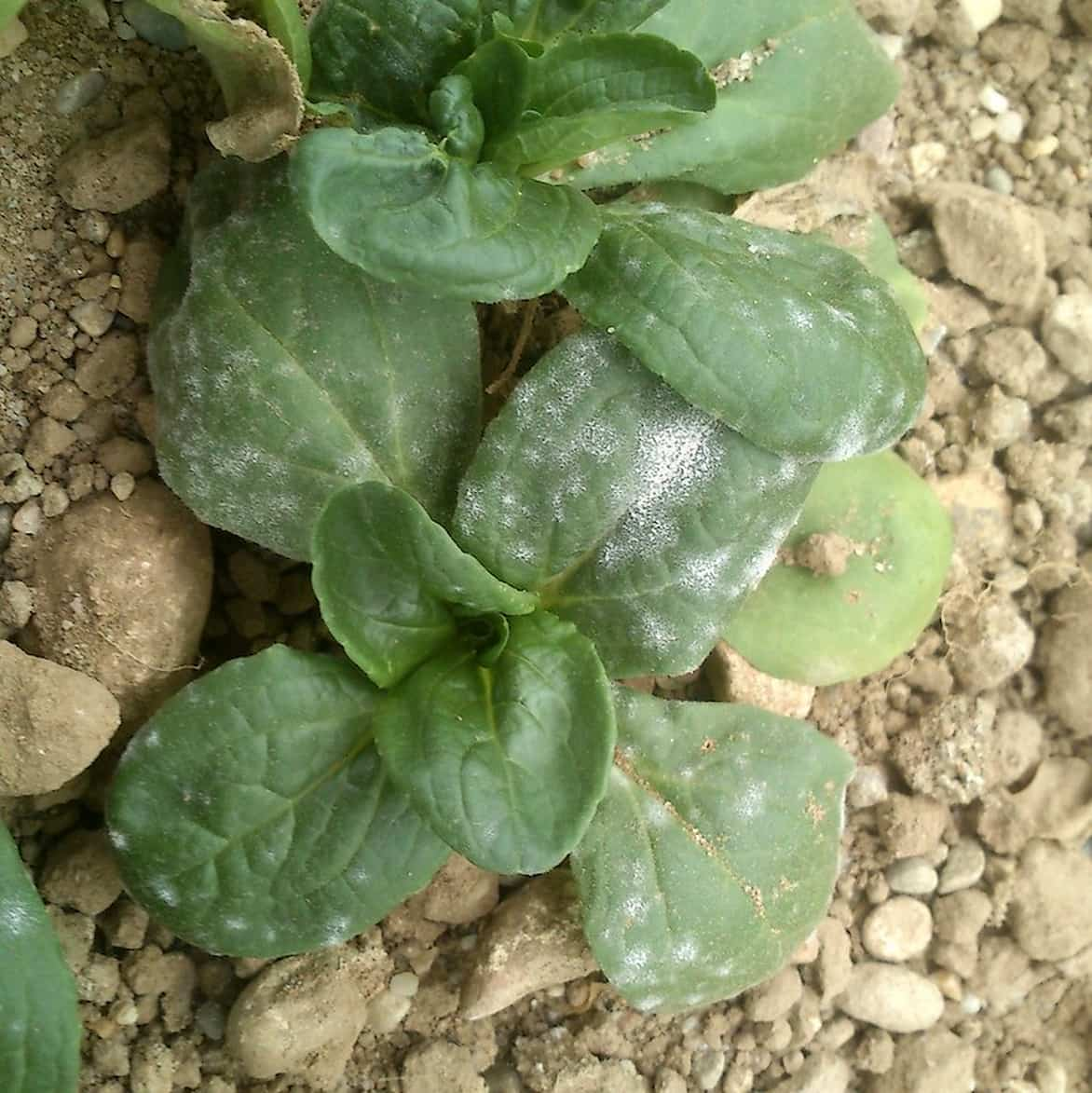 Powdery mildew affects lamb’s lettuce when the weather is humid and warm.
Powdery mildew affects lamb’s lettuce when the weather is humid and warm.
The other number one enemy of lamb’s lettuce is the slug. There are a thousand and one natural ways to drive them away.
→ Also read: the diseases and pests of salads.
What to plant with lamb's lettuce in the vegetable garden?
Lamb’s lettuce enjoys the company of leeks and onions. It also finds its place between the ranks of cabbages or carrots that provide it with shade.
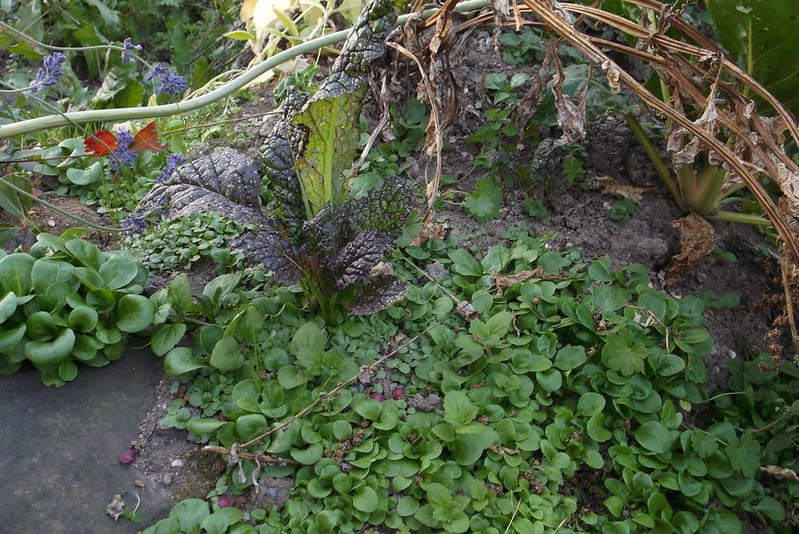
Lamb’s lettuce thrives alongside cabbages that offer it beneficial shade
Use of Lamb's Lettuce
The benefits of eating lamb’s lettuce
As lamb’s lettuce is low in calories, it can be eaten without fear of the scales. But its main nutritional qualities lie in its content of omega-3 and beta-carotene, the provitamin that converts to vitamin A. It is also an antioxidant. In addition to these virtues, lamb’s lettuce is rich in vitamins C, B6, and B9 (folic acid) and E, as well as minerals and trace elements (iron, potassium, phosphorus, copper, zinc, calcium, selenium). And of course, it contains fibre.
How to prepare lamb’s lettuce?
The most common way to eat lamb’s lettuce is raw, in a salad, accompanied by walnuts, feta, shavings of parmesan, fresh goat cheese or Roquefort, and pieces of pear or apple. It can also be paired with cooked or raw beets or with devilled eggs. As the leaves of lamb’s lettuce are quite delicate, it is recommended to add the dressing just before serving. Use mild oils such as grape seed or walnut oil. Balsamic vinegar also enhances the delicate flavour of lamb’s lettuce.
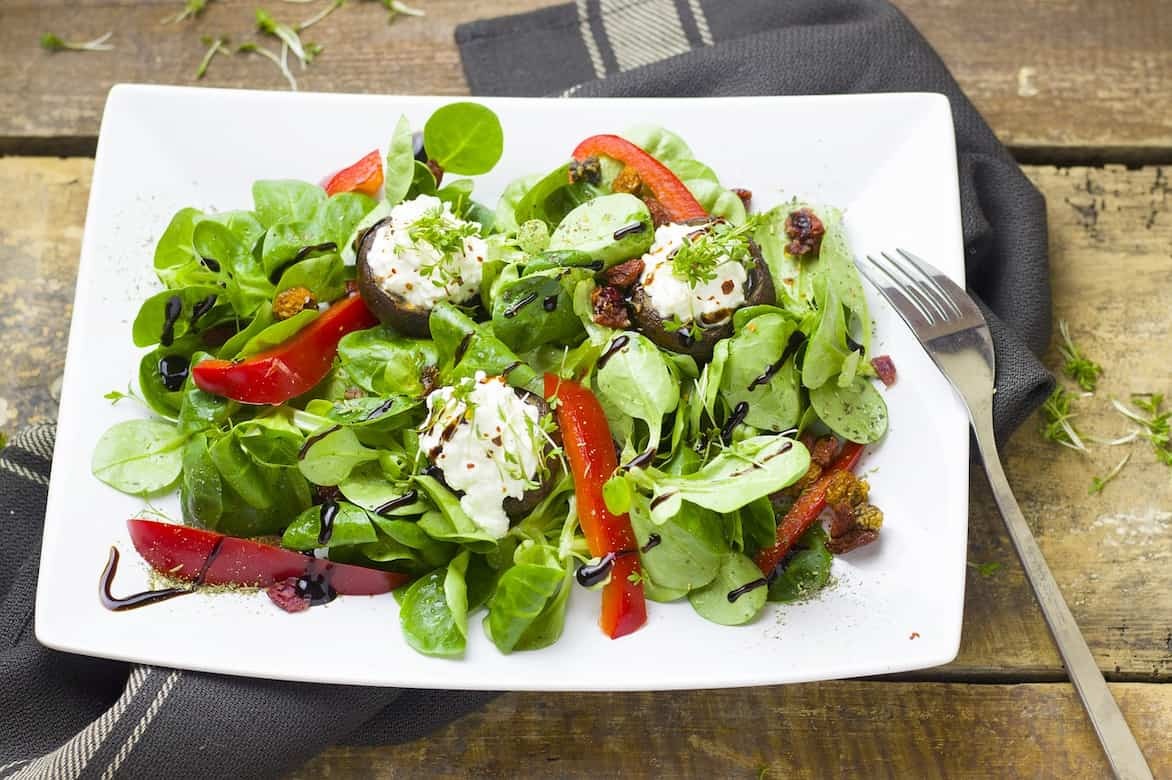 Lamb’s lettuce is mainly prepared in salads
Lamb’s lettuce is mainly prepared in salads
Lamb’s lettuce can also be cooked, steamed for 5 minutes, or boiled for 6 to 7 minutes. It is served with fish such as salmon. It can also be prepared as a velouté, in pesto, or on a pizza…
If you have never sown lamb’s lettuce, follow Ingrid’s advice to succeed in growing it.
We offer over 20 different varieties of lamb’s lettuce to sow from mid-July to the end of October.
Discover our article: 6 varieties of lamb’s lettuce to grow in the vegetable garden.
Also find out how to grow salad, including chicory, in pots.
- Subscribe!
- Contents































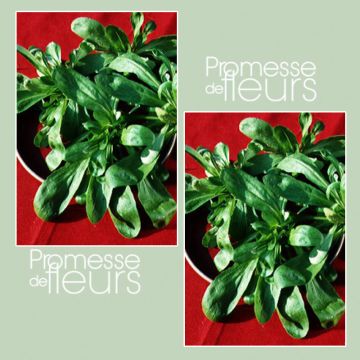


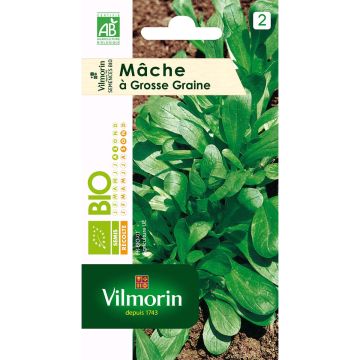


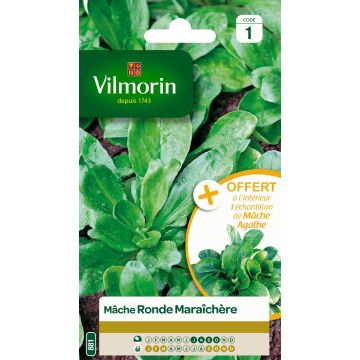
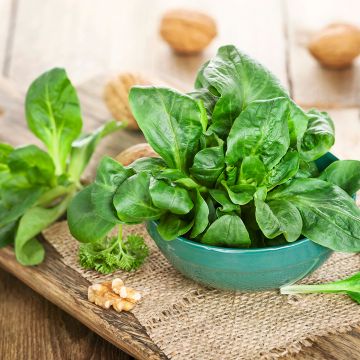
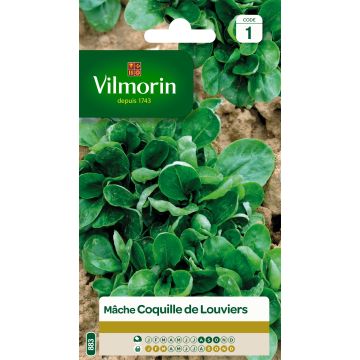

Comments